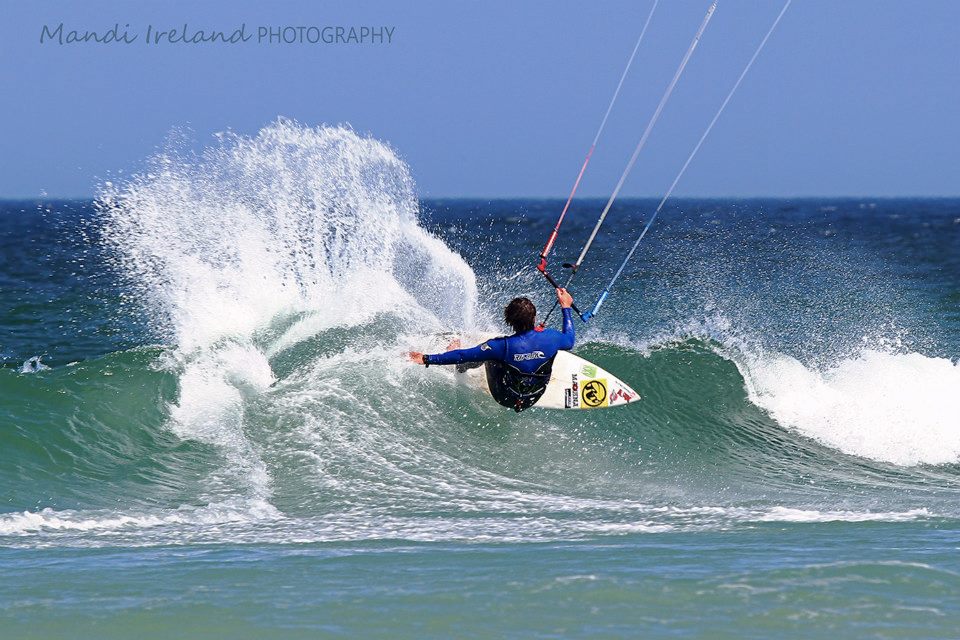Cape Town, with its spectacular scenery and wide coastline, has a world reputation for producing some of the best waves for surfers of all abilities. Cape Town has a unique surf scene, with the iconic Table Mountain rising over the city and scenic beaches spanning both the Atlantic and False Bay coastlines. Finding the ideal beginner-friendly beach break is critical for people who are just getting started in surfing. You want regular, soft waves, simple access to board rentals and lessons, and a welcoming community atmosphere to help you fall in love with surfing.
Fortunately, Cape Town has multiple options that meet the criteria, each offering something distinctive. In this blog post, we’ll look at the best beginner surf breaks in the city, including Muizenberg (perhaps the most well-known beginner spot in the country), Big Bay (a favourite among those who live on the Atlantic side), Doodles (a popular local break near Tableview), and more along the Tableview beachfront. So wax up your foamies, grab your wetsuit, and get ready to dive into the warm (or occasionally extremely chilly!) waters of the Mother City. By the conclusion of this article, you’ll know exactly where to paddle out first as you start your surfing adventure in Cape Town.
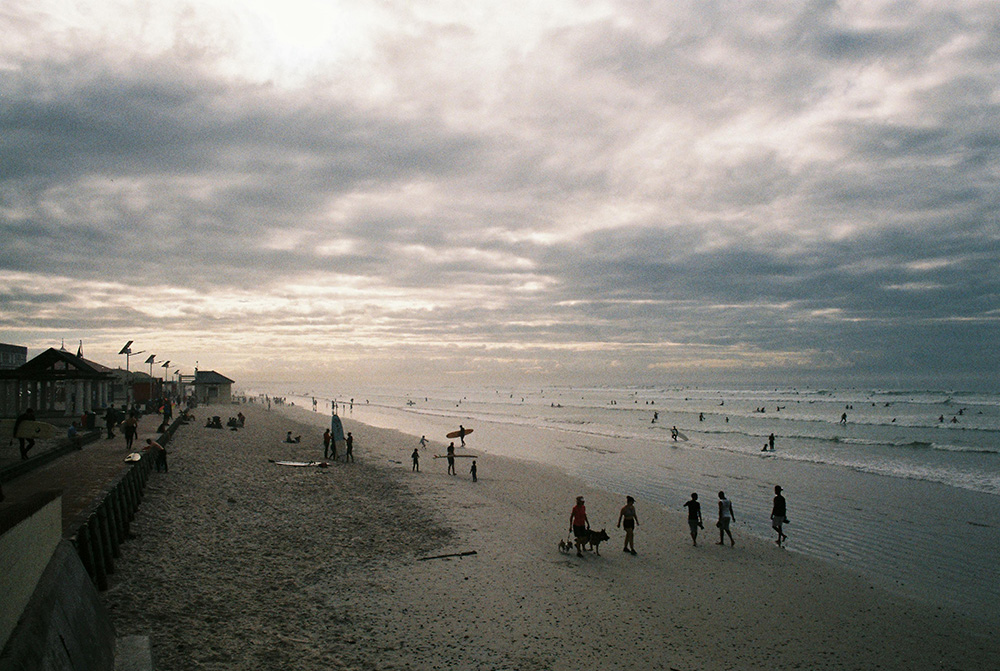
1. Muizenberg, the classic beginner’s paradise.
Why Muizenberg is ideal for beginners
If you ask any Cape Town local or seasoned surfer where to begin your surfing experience, “Muizenberg” is almost certainly the first thing you will hear. Muizenberg, located on the False Bay shoreline, is well-known for its long, mellow waves that break over a sandy bottom, making it ideal for beginner surfers. on reality, many highly skilled or even professional surfers learnt to surf on Muizenberg’s renowned forgiving conditions.
One of Muizenberg’s most significant advantages is constancy. While other places in the city may be tide-dependent or severely windy at times, Muizenberg normally provides rideable waves throughout the year and throughout the day. Though circumstances might change – especially when the southeasterly “Cape Doctor” wind blows – many mornings and afternoons have soft, rolling waves that make learning not only possible, but also enjoyable. You won’t generally find enormous, hollow barrels here; instead, the waves are often crumbly and mushy, giving a safe practice ground for perfecting your takeoff.
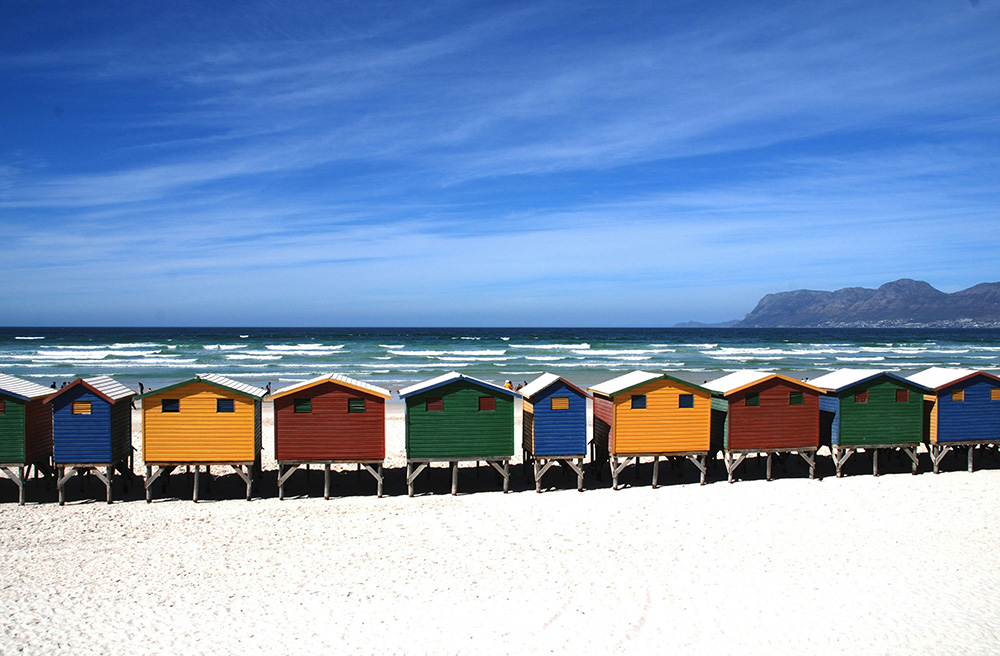
Amenities & Surf Schools
Muizenberg is especially notable for its number of surf schools and rental companies located within a few meters of the beach. If you’re seeking for instruction, simply go along the seashore and arrange a group or individual session with one of the many established schools. These schools supply all of the essential equipment, including wetsuits, boards, and teachers who are generally friendly and enthusiastic surfers themselves.
There is also a strong culture along the beach. Muizenberg’s promenade is lined with quirky coffee shops, great bakeries, and typical Cape Town eateries, making it ideal for a post-surf breakfast or snack. One of the attractions is the vibrant row of historic Victorian beach huts, which serve as a backdrop for several surf selfies and group photographs. Even when the waves aren’t at their peak, Muizenberg’s atmosphere makes the trip worthwhile.

What to Expect in the Water
Beginners, intermediate surfers refining manoeuvres, and a few locals who paddle out every day to keep in shape are common sights. Because Muizenberg is such a beginner-friendly location, it can get crowded, especially on weekends and during summer school breaks. Don’t be disheartened by the throng; instead, consider it a time to observe and learn from other surfers. Remember appropriate surf etiquette, and you’ll find that most people understand and want to share waves.
2. Big Bay: Surfing with a View of Table Mountain.
Location and scenery
Big Bay is situated on the Bloubergstrand beachfront, just a short drive from Cape Town’s city centre. Aside from being a popular kite-surfing location (you’ll see a lot of colourful kites soaring above the waves on a windy day), Big Bay has a sheltered cove that’s ideal for surfers, particularly those who are new to the sport but want a little more excitement. The spectacular view of Table Mountain in the distance is one of the most appealing aspects of this location. If you can stand up on your board for just a few seconds, you’ll be treated to one of the world’s most iconic views.
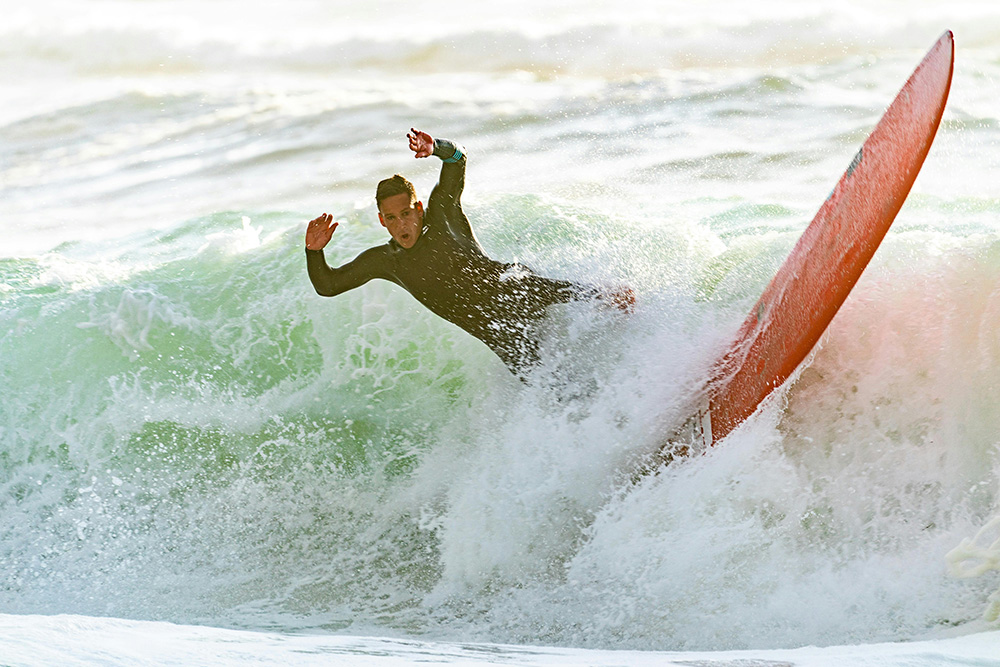
Waves and conditions
Big Bay’s waves can be slightly more strong than Muizenberg’s because the beach faces the Atlantic Ocean. However, when the circumstances are ideal—especially on lesser swell days—gentle, rolling waves break both left and right. At certain tides, Big Bay generates a great sandbank that lets you to catch a wave and ride it all the way to the shore, giving you plenty of opportunity to work on your stance and balance.
It’s worth mentioning that the water here can be frigid, especially when a South Atlantic current passes through. A good wetsuit (3/2 mm or 4/3 mm) is normally suggested all year, but the exact thickness depends on your tolerance for cold. While wind might be a problem (and can increase dramatically in the afternoon), early mornings frequently produce glassy conditions that are ideal for new and developing surfers.
Local Surf Scene & Facilities
Surf shops and cafés can be found throughout the Big Bay area, where you may rent a board and have a coffee before or after your session. Big Bay is well-known for hosting local surfing tournaments, but it is also a popular destination for stand-up paddleboarders. For newcomers, a sense of community can be motivating. People are generally encouraging, and there is a collective stoke in the air when the waves are crashing. If Muizenberg feels too far from your accommodation on Cape Town’s Atlantic coast, or if you want a different perspective, Big Bay is a wonderful choice for your next surf adventure.
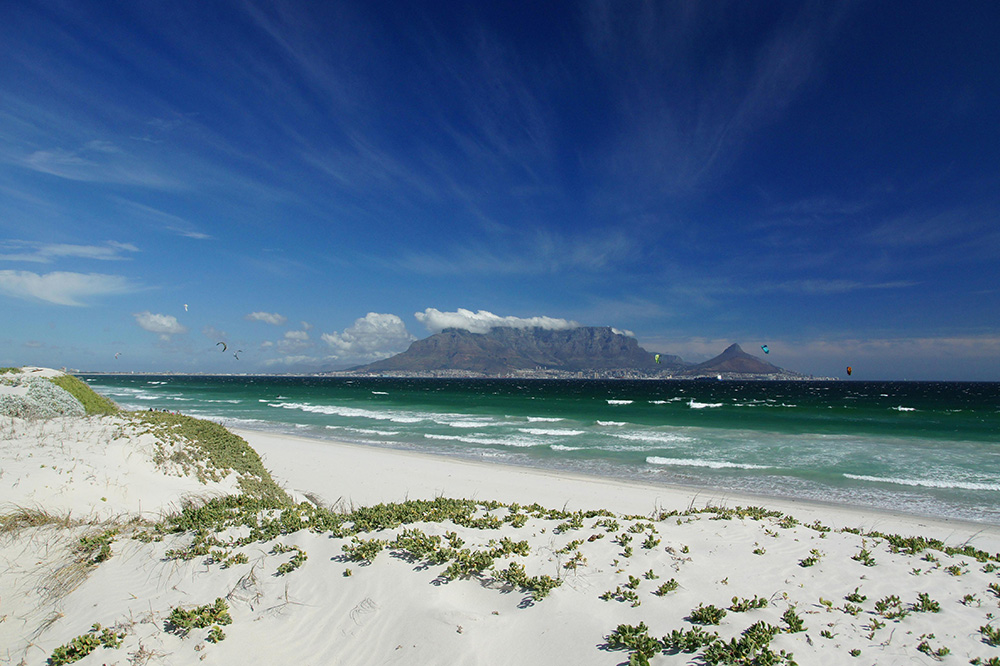
3. Tableview Beachfront: A Stretch of Surfing Possibilities.
Location and overall atmosphere
The Tableview beachfront, which runs along the Blouberg coastline, is a large stretch of beach with a variety of surf breaks for all ability levels. When locals say “surfing at Tableview,” they frequently mean the entire stretch from Dolphin Beach to the areas surrounding Kite Beach and beyond. Open stretches of shoreline can produce great beginner-friendly waves when conditions are right, particularly during lesser swells.
Surfing along Tableview’s coastline also has the added benefit of having Table Mountain as a backdrop—one of the main reasons many visitors come to this part of Cape Town. On calm days, you’ll be greeted by postcard-perfect scenery, including the water shimmering, the mountain poised on the horizon, and local surfers enjoying their session. If you’re a beginner, keep an eye on the forecast and aim for days with smaller waves, as the Atlantic can occasionally throw bigger surf that is better left to more experienced surfers.
Learning to Surf and Amenities
Though Tableview’s waves can be more difficult for complete beginners (compared to Muizenberg), they are still feasible with the proper instruction and conditions. Several surf schools operate in the area, and they are experienced in analysing wave conditions to select the safest locations for group sessions. If you’re travelling light and don’t have your own gear, don’t worry; board and wetsuit rentals are usually available at local businesses.
One bonus of surfing in Tableview is the variety of local cafés and restaurants, many of which provide outdoor sitting with ocean views. Whether you want to fill up for a substantial breakfast, grab a quick sandwich, or enjoy the sunset with a well-deserved hot drink after surfing, there are lots of alternatives along this stretch of beach.

Wind and Crowd Factors
Keep in mind that Tableview is also popular among kite surfers due to its legendary summer southeasterly breeze. On particularly windy days, the ocean surface can become choppy, making it unsuitable for beginners. However, early mornings are frequently characterised by lesser wind conditions, making it ideal for getting out in the surf before the kite surfers take to the sky. Crowds vary, but most days you’ll have plenty of space to practise your pop-ups and turns without feeling crowded.
4. Doodles, a local favourite with laid-back charm
What makes Doodles unique
Doodles is a popular surf area called after the restaurant and bar located directly on the beach—Doodles Beachfront. While technically part of the Tableview/Bloubergstrand strip, it stands out due to its particular local flavour. Many Cape Town surfers just call this break “Doodles,” especially when they get together for a sunset surf session or a casual weekend paddle. For novices, Doodles can provide a slightly more tranquil mood than other breaks because the waves are lower when the surge is not too large.
Wave characteristics
The wave at Doodles breaks over a sandy bottom and has a gentle take-off, which is ideal for kids who are still learning to pop up and balance. With the correct tide and swell size, you’ll find lively, rolling waves ideal for honing your stance and trimming along the face. While it can get busier on weekends, it’s usually less crowded than other Cape Town beaches—though it’s always a good idea to be respectful and aware of the lines.
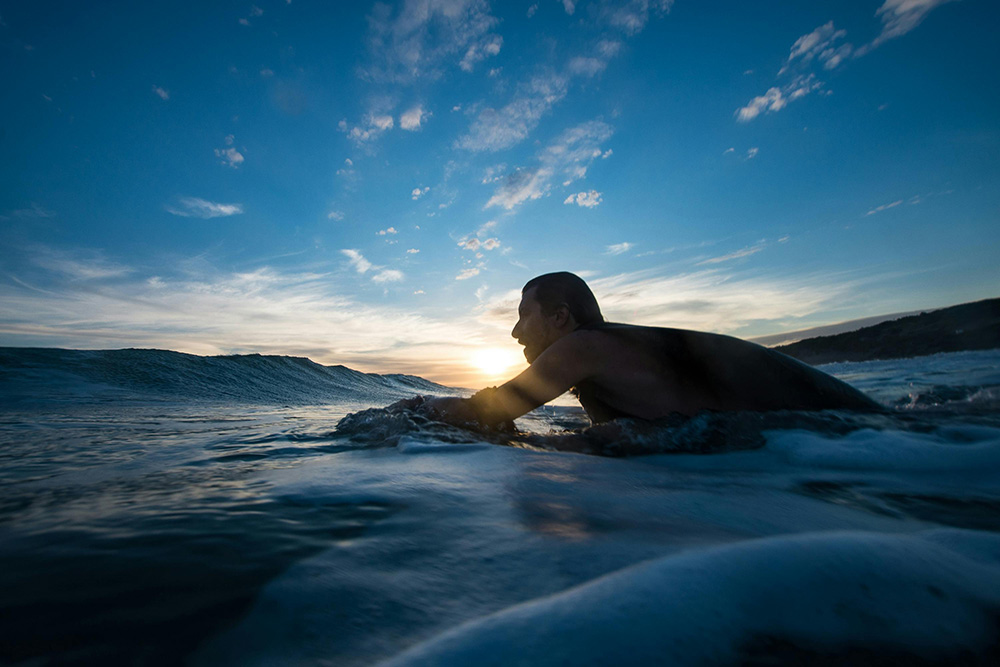
Eat and socialise
A major advantage of surfing here is the easy access to decent cuisine and a post-surf social location. Doodles Restaurant overlooks the break, so whether you’re waiting for a friend to finish their session or just got out of the water yourself, it’s a great place to get a fast lunch or a refreshing drink. The atmosphere is consistently easygoing, with both residents and visitors congregating on the seashore to talk about waves, wind conditions, and the latest surf gear.
If you’re a novice looking for a site with good waves and a pleasant social setting, Doodles could be your new favourite place to paddle out. It’s just a short walk from other breaks in the region, so if the conditions aren’t ideal at one location, you can continue down the beach and locate another peak.
5. Tips for Beginner Surfers in Cape Town
While selecting the proper site is essential for a successful beginner surfing experience, there are a few other considerations to keep in mind to help you make the most of your time in the water.
1. Invest in a good wetsuit.
Cape Town’s waters can be frigid, particularly on the Atlantic side. A quality wetsuit (3/2 mm or 4/3 mm, depending on the season) will keep you comfortable and allow you to stay in the water for longer. If you’re not sure what size or thickness to get, get help from a local surf store.
2. Rent or Purchase the Right Board
Beginners often perform better on longer, more buoyant boards, also known as foamies or mini-mals. These boards are easier to paddle, provide more stability, and increase the likelihood of standing up and riding a wave. If you’re not sure if you’ll keep surfing long-term, start by renting a beginner board from a local surf school to discover what feels good.
3. Check the Surf Forecasts and Conditions
Learn to study surf reports or seek advice from knowledgeable locals and experts. Knowing the swell height, wind direction, and tide might mean the difference between a successful and frustrating session. Many local surf shops and online platforms report current conditions for Muizenberg, Big Bay, and Tableview.
4. Respect surf etiquette
As a newbie, you may be unfamiliar with the “unwritten rules” of the lineup, such as right of way, not interrupting someone already riding a wave, and talking with other surfers. Practicing these courtesy guarantees a safer and more enjoyable experience for all.
5. Take Lessons If Possible
While it’s tempting to just grab a board and go, effective instruction can substantially shorten your learning curve. Instructors will teach you the proper stance, how to paddle efficiently, and how to read waves, all of which are essential skills for avoiding frustration and forming good habits early on.
6. Stay positive and have fun
Surfing is more than just a sport; it is a lifestyle. You’ll encounter wipeouts, freezing water, and days when the waves simply won’t cooperate. Accept the trip, cherish tiny accomplishments (like as catching your first “green wave”), and learn from each wipeout. Even the most experienced surfers are always learning new skills.
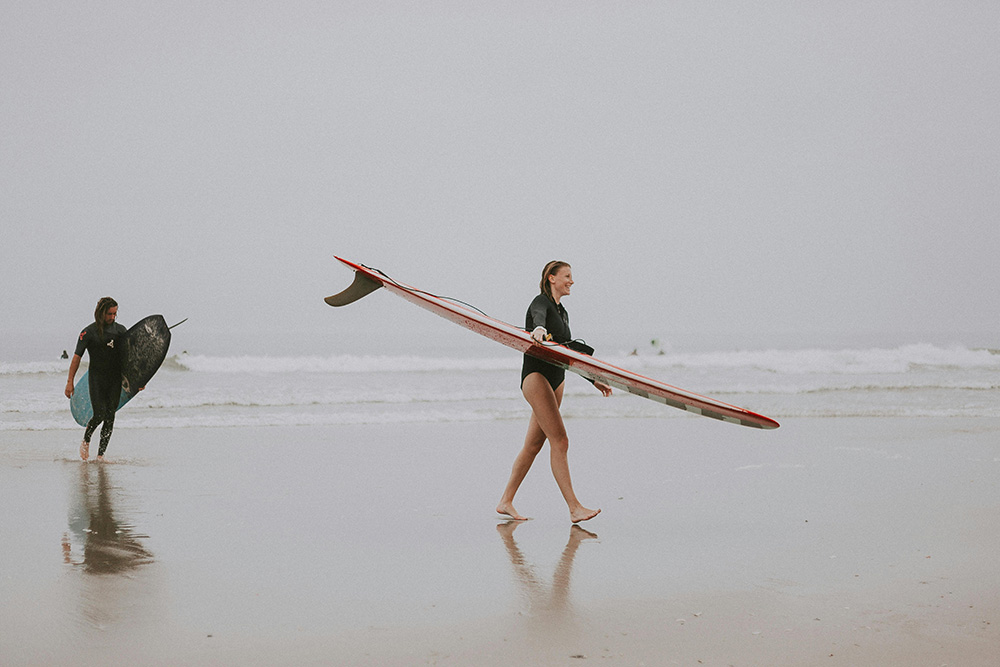
6. Embracing Cape Town Surf Culture
Immersion in the local surf culture is one of the highlights of surfing in Cape Town. Surfers in Cape Town are known for their diversity—people of all ages, backgrounds, and occupations rush to the waves before sunrise, noon, or just after work to catch a few rides. The community is united by a love of the ocean, a respect for nature, and a determination to seize the stoke whenever the swell appears favourable. If you’re new to the local surf scene, don’t be afraid to strike up talks with other surfers. Most are delighted to provide tips on identifying rips, interpreting wind patterns, or simply recommending the best restaurant for a nice supper after the session.
You’ll also notice that many regions establish their own particular surfing “tribes.” At Muizenberg, you’ll see a lot of longboarders or foamie riders, and the atmosphere is often relaxed and welcoming. Big Bay attracts a large number of kite surfers and stand-up paddleboarders, which adds a unique dynamic to the lineup. The Tableview beachfront, particularly near Doodles, provides a calm atmosphere in which family and friends may go for beach walks, barbecues (braais), and nighttime surf sessions. As you visit each break, you’ll come to appreciate the variety that Cape Town has to offer—and you might even find your particular favourite.
Finding Your Wave in the Mother City.
Cape Town’s unusual geography, which includes two distinct coastlines and a variety of microclimates, means that a wave is virtually constantly breaking somewhere in the city. For beginners, the task is simply to find a location that gives the easiest and safest conditions for developing confidence. Muizenberg routinely tops the list due to its mild waves and vibrant surf school environment, making it the go-to spot for first-timers and those wishing to improve their skills. On the other side of the city, Big Bay beckons with breathtaking mountain views, while the Tableview beachfront, featuring Doodles, offers a sense of community and variation to any surf session.
Whatever location you choose, keep in mind that surfing is a lifelong experience. Surfing teaches you how to read waves, feel at ease in the ocean, and flow with the tides. As a novice in Cape Town, you have a multitude of resources at your disposal, from qualified instructors eager to assist you through your first pop-up to friendly locals who will share their wave-riding knowledge over a cup of coffee at a seaside café.
So, if you’ve always wanted to catch your first wave, now is the time to start. Whether you go directly to Muizenberg’s mild rollers, test yourself at Big Bay on a calm day, or find your rhythm along the Tableview beachfront at Doodles, each session will get you closer to that addicting feeling of standing up and riding the wave towards shore. Expect a few tumbles, cherish each breakthrough, and enjoy the simple pleasure of being in the ocean.
Cape Town’s surf scene is ready to welcome you with a foamie in hand and a huge smile on your face. Over time, you’ll discover whatever location speaks to you the most—maybe you’ll become a lifelong Muizenberg resident, or perhaps you’ll fall in love with the panoramic vistas of Big Bay. Finally, the best surf spot is one that keeps you going back, fuels your passion, and helps you develop with each ride. Whichever one you choose, you’ll soon be flying across the glassy face of a wave, the beautiful Table Mountain silhouetted behind you, feeling as if you’ve discovered Cape Town’s greatest secret.

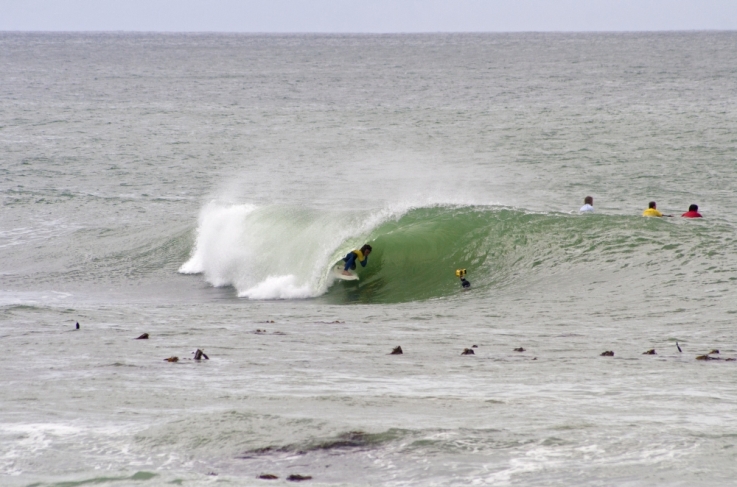
 Pushing the Limits
Pushing the Limits
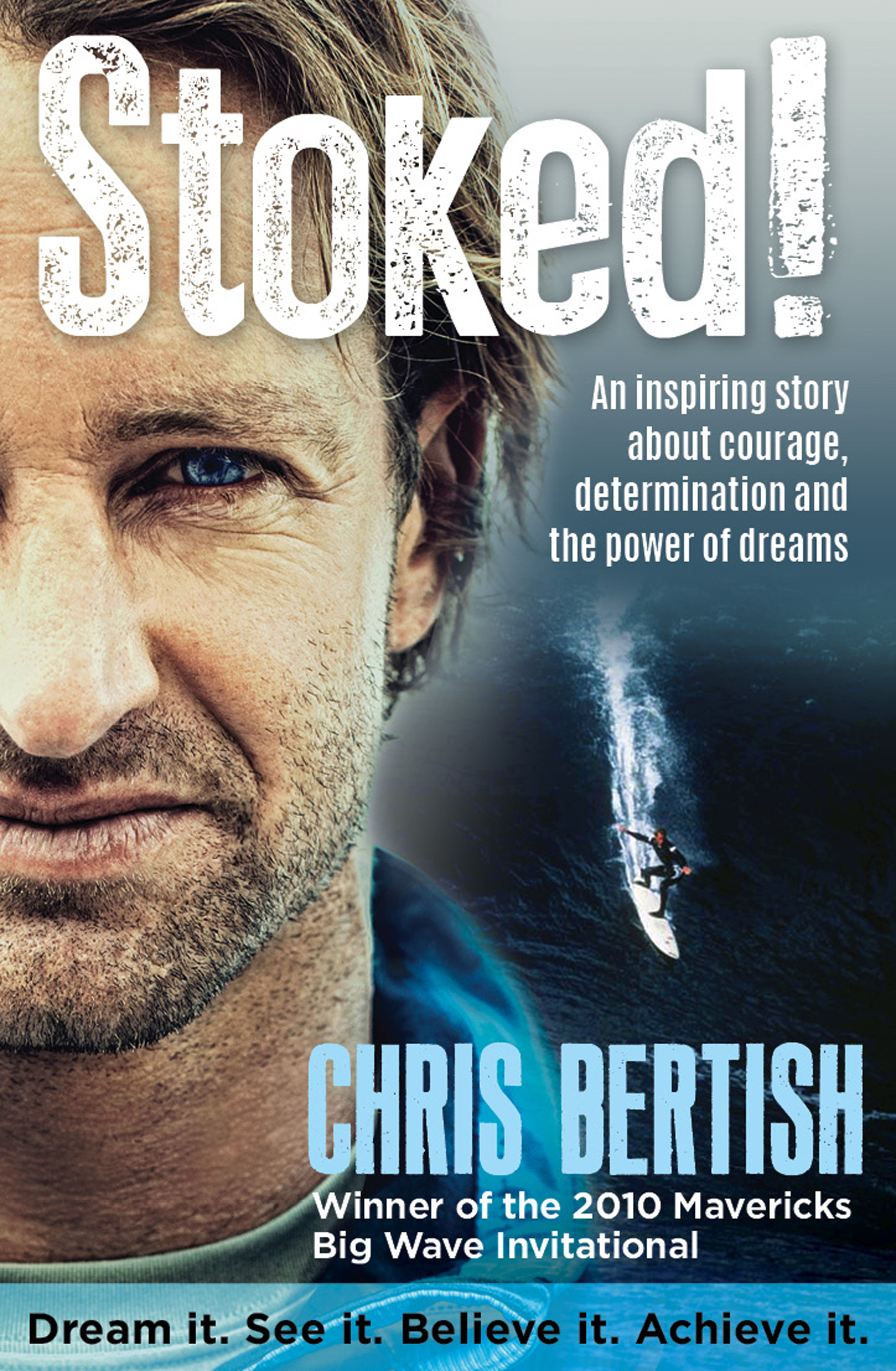
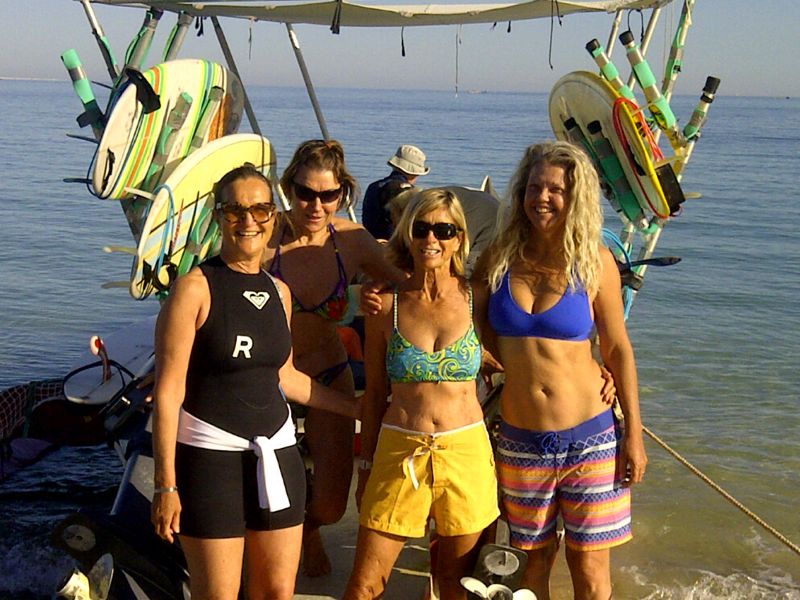
 For surfers, a typical day includes checking if there are any waves, having breakfast, and surfing the entire day. This is also true for Andrew Wilsnagh on a day off. Andrew began surfing at about 12 years old and attended Rondebosch Prep and High but eventually left because he hated it and went to Art College. His father was disappointed but his mother (who is originally French) was more supportive. Without any restrictions at school and having a passport on hand, Andrew gave studying a back seat and put surfing in the driver’s seat. But before long, when he reached 16, he became involved into school clubs and that became his priority. It took 3 years for him to stop surfing. Fortunately with some friends, Lyndon Read and Hamish Hogg, he was brought back into boards again. “I left the needle in my mid-twenties”, he says.
For surfers, a typical day includes checking if there are any waves, having breakfast, and surfing the entire day. This is also true for Andrew Wilsnagh on a day off. Andrew began surfing at about 12 years old and attended Rondebosch Prep and High but eventually left because he hated it and went to Art College. His father was disappointed but his mother (who is originally French) was more supportive. Without any restrictions at school and having a passport on hand, Andrew gave studying a back seat and put surfing in the driver’s seat. But before long, when he reached 16, he became involved into school clubs and that became his priority. It took 3 years for him to stop surfing. Fortunately with some friends, Lyndon Read and Hamish Hogg, he was brought back into boards again. “I left the needle in my mid-twenties”, he says. Back when he was young, he really had an absolute party and he wouldn’t want to change that. “I still love the jol but riding waves is my religion, and nothing gets in its way,” he says. “And hey, if you regret your past I skeem you kind of regretting your present!” he added. Except for one thing, he wishes he had been to Indonesia already.
Back when he was young, he really had an absolute party and he wouldn’t want to change that. “I still love the jol but riding waves is my religion, and nothing gets in its way,” he says. “And hey, if you regret your past I skeem you kind of regretting your present!” he added. Except for one thing, he wishes he had been to Indonesia already.

 Billy Ackerman was originally born in Durban in 1957 and started to surf there at a very young age, till they transferred to Cape Town in 1985. Presently, he is working at the biggest Valve Supplying Company in RSA, as one of the Tech Sales Team members. He loves to travel and search for new surfing spots.
Billy Ackerman was originally born in Durban in 1957 and started to surf there at a very young age, till they transferred to Cape Town in 1985. Presently, he is working at the biggest Valve Supplying Company in RSA, as one of the Tech Sales Team members. He loves to travel and search for new surfing spots.
